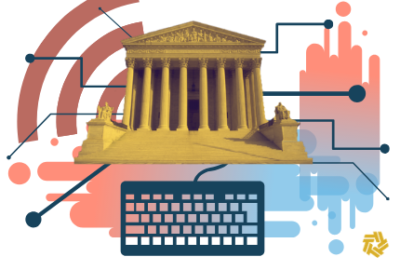

Hubbard Radio Washington DC, LLC. All rights reserved. This website is not intended for users located within the European Economic Area.
The Director of Health Care issues at the Government Accountability Office Sharon Silas discusses what the watchdog agency found.
Best listening experience is on Chrome, Firefox or Safari. Subscribe to Federal Drive’s daily audio interviews on Apple Podcasts or PodcastOne.
Twenty billion dollars is nothing to sneeze at, even for a department as big as Veterans Affairs. But that’s how much extra VA got in the CARES Act aimed at pandemic relief and passed in March of last year. This year, though, VA has only obligated about half the money. The Director of Health Care issues at the Government Accountability Office Sharon Silas spoke to Federal Drive with Tom Temin about what else the watchdog agency found.
Interview transcript:
Tom Temin: Sharon, good to have you back.
Sharon Silas: Great, thanks for having me.
Tom Temin: So you decided or I guess you were told, GAO was told by Congress to take a look at what happened to that 19.6 billion to be precise, it wasn’t quite 20 billion. And a year later, only half obligated. Tell us more about what you looked at and what you found.
Sharon Silas: Sure. So the CARES Act had provision for GAO to report on federal government’s ongoing monitoring and oversight of efforts are related to the COVID-19 pandemic. So for this particular view, we look to try to understand how VA was obligating and expanding these supplemental funds, and then also assessing how VA was overseeing the COVID-19 funding.
Tom Temin: And so it seems like they got more money than they needed at this point.
Sharon Silas: Well, for fiscal year 2020, VA’s annual budget exceeded $200 billion. And most of that went towards supporting health care administered through the Veterans Health Administration, and then also benefits administered by the Veterans Benefits Administration. So the CARES Act, and the Families First Coronavirus Response Act, both enacted in March 2020 provided an additional $19.6 billion in supplemental funding. So this is over and above the annual appropriation. And this funding was specifically to be used to prevent, prepare for and respond to COVID-19. And to support COVID-19 testing during the pandemic. The majority of these funds went to the Veterans Health Administration, followed by the VA Office of Information Technology.
Tom Temin: Alright. And so at this point, then this was as of March, when you actually took the look, they had obligated about 9 billion and had spent about 8 billion. And so what does the say about whether they need the other half of that money?
Sharon Silas: Sure. And you’re correct through the end of March of 2021, VA had just spent over half of these funds, about 9.9 billion out of the 19.6 billion. One of the things that we observed in looking at how VA was obligating and spending these funds is there was kind of a period of where they were ramping up to be able to monitor and track these funds. So a few of the issues that they had to deal with was, one, just setting up some new codes for their financial management system that were specifically targeted to track those supplemental funds. Also, initially, as VA was trying to ramp up and respond to COVID-19, they initially coded some of the COVID-19 related expenses with obligations of annual appropriations. And so they had to later go back and recode those to make sure that they were actually tracking towards the supplemental funding. There was also some delays with VA’s Office of Information Technology, which received the second largest portion of funding from the supplemental funds. The Office of Information Technologies for its delays and their hiring process for additional personnel, but also contributed to the slow growth in the obligations and expenditures of funds. When you look kind of over the year long period, you can see that as they ramped up and got some of these processes in place, they were able to kind of more quickly obligate and to spend some of this funding.
Tom Temin: We’re speaking with Sharon Silas, the director of healthcare issues at the Government Accountability Office. But given the pace of what is happening with a pandemic, with fewer and fewer new cases popping up, less and less need, frankly, for testing, do they need the other 9 or 10 billion that have not been obligated yet?
Sharon Silas: Sure. So some of the funding that the Veterans Health Administration used over the period that we looked at went primarily towards community care, salaries and expenses, supplies and materials, and support for homeless veterans. When we looked at what the Veterans Health Administration is planning to use for the rest of the funds, they plan to use that funding for vaccine distribution, additional PPE and then continuing to do COVID 19 testing. The Office of Information Technology, again, they received the second largest portion of the funds – during the period that we looked at they primarily obligated funds for the operation and maintenance activities related to COVID-19 such as expanding telehealth for veterans, and then also telework for VA employees. Looking at their spend plans for the rest of the fiscal year, they’re looking at using those funds for additional equipment, building network capacity and obtaining software licenses. According to the spend plans and our conversations with VA officials, they do plan to expand the remaining funds by the end of the fiscal year 2021.
Tom Temin: And of that 19.6 billion altogether, how much of that was for the Office of Information Technology?
Sharon Silas: About 11% of those fundings went to the Office of Information Technology, 89% went to the Veterans Health Administration. So it’s the bulk of the funding went to those two components of VA.
Tom Temin: So around 2 billion, in other words,
Sharon Silas: Yes.
Tom Temin: And are you satisfied that the remaining spending that they want to do is in fact related to the pandemic – especially in the OIT?
Sharon Silas: Yes. As I mentioned, before, initially when VA was responding to the COVID-19 pandemic, there was a lot of kind of trying to predict where they were going to need these funds. And then as the pandemic went on, they were able to kind of make adjustments and better plan for how they were going to be using those funds. And so looking at the spending plans now for the rest of the fiscal year, it looks as though the funding would be appropriately used.
Tom Temin: And the coding issues and so forth, making sure that the right funds were accounted for in the right way. That’s kind of an OIT issue also, right, because they’re the ones that had to build the new codes and procedures into the accounting system – correct?
Sharon Silas: Correct, yeah. And once they have the code set up, and also using the processes that they already had in place, they also initiated or put out new guidance to help track these funds. So all of those different elements were put in place as the pandemic was going on, and now they’re in place, and so they’re able to appropriately track the funds, as needed.
Tom Temin: Sure. Is it a concern in general of GAO, maybe this is outside of the scope of the report. But I mean, it’s kind of a Gestalt for GAO is it not to make sure that when agencies get a piece of large S like this, an extra amount of money, that they don’t find ways to spend it in order to spend it, for the sake of spending it, but that they really use what they need for the purpose of hand for which it was appropriated? And I should probably never say this out loud, but turn some back.
Sharon Silas: So I mean, at least for this review, we did not evaluate the extent of the VA components adhere to the processes that they developed to manage the supplemental funding. We reviewed VA financial management processes in the context of federal standards for internal controls related to monitoring and communication. But during the course of our review, we looked at a non-generalized sample of VISNS, the networks and the financial coding for 10 national contracts, and we did not during this course of the review observe any non-adherence to their processes. But we do in a report, make a note that others in the past have identified issues with VA’s financial management practices.
Tom Temin: So any particular recommendations from this look see?
Sharon Silas: No, we did not have any recommendations for this review.
Tom Temin: Alright. Sharon Silas is director of healthcare issues at the GAO. As always, thanks so much.
Sharon Silas: Thanks.
Copyright © 2024 Federal News Network. All rights reserved. This website is not intended for users located within the European Economic Area.
Tom Temin is host of the Federal Drive and has been providing insight on federal technology and management issues for more than 30 years.
Follow @tteminWFED



